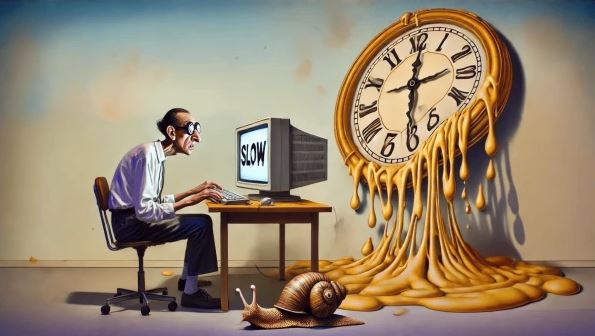Simple ways to fix your slow computer.
Keeping Your Computer in Top Shape
Computers are a lot like cars—they require regular maintenance and proper care to keep running smoothly. Over time, you may notice your computer becoming slower day by day. But don’t give up on your old reliable machine just yet. With the right steps, you can restore your PC’s performance without replacing it.

Step 1: Organize Your Files
Start by tidying up your system. Avoid cluttering your desktop with too many icons, and keep only essential files in your C:\ drive, which is best reserved for system and hidden files.
Step 2: Run Disk Cleanup
Use the built-in Disk Cleanup tool to free up space on your hard drive. It identifies unnecessary files like:
-
Temporary internet files
-
Windows temp files
-
Unused restore points
-
Shadow copies
-
Files in the Recycle Bin
Removing these can significantly improve your system’s performance.
Step 3: Run Disk Defragmenter
Regularly defragmenting your hard drive can also boost performance—especially after adding a large number of files or programs. If your available disk space drops below 15%, or you’ve just installed a new program or operating system, defragmenting helps optimize how data is stored.
Step 4: Upgrade Your RAM
Sometimes, your PC just needs a little more memory. If you’re running with 512 MB of RAM, upgrading to 1 GB is recommended. If you already have 1 GB, consider increasing to 2 GB. More RAM means better multitasking and faster performance.
Step 5: Uninstall Unused Programs
Extra software takes up space and can slow your PC down. Head to Control Panel > Programs and Features and remove any programs you no longer use.
Step 6: Check for Malware
If your computer suddenly becomes sluggish, it could be due to a malware infection. Run a full scan using a reliable antivirus and anti-spyware program. These tools can detect and eliminate threats that traditional virus scanners may miss.
Step 7: Clear Browser Cache
Your web browser stores data to speed up site loading, but over time, it can slow things down. Reduce your browser’s cache size and delete browsing history to free up space and improve performance. In most browsers:
-
Go to Tools > Internet Options > General Tab
-
Click Settings under the Browsing History section
-
Adjust history limits and cache size, or set to zero if you don’t use history
Laptop Repair Technicians: Behind the Scenes
Computer repair technicians work in a variety of environments—from corporate IT departments and retail service centers to highly specialized areas like defense and intelligence. Each setting requires different skills and knowledge. For example, someone repairing a home PC may not have the expertise needed for military-grade systems or enterprise networks.
Technicians often deal with a wide range of hardware: PCs, laptops, servers, routers, and more. In secure environments, they may be responsible for keeping mission-critical systems running efficiently and reliably.
With businesses increasingly dependent on digital infrastructure, skilled technicians are essential—not just for troubleshooting, but also to ensure that decision-making systems remain operational.
A Word on Qualifications
While on-the-job learning has its place, technicians without formal training or certification may find their career growth limited. Advanced roles in planning, supervision, and management are usually reserved for those with recognized qualifications. A certified technician is equipped to identify not just symptoms, but root causes—and that makes all the difference.
Still Slow? Consider an Upgrade
If you’ve tried all of the above and your PC is still underperforming, it might be time to upgrade your operating system. For example, upgrading from an older OS to Windows 7 (or newer) can significantly enhance speed and stability. Be sure to follow a trusted Windows upgrade guide and back up your data before proceeding.
Whether you’re cleaning up your current setup or considering a professional repair, Computer Repair Miami is here to help you get the most from your machine. Don’t toss out your PC—tune it up!
